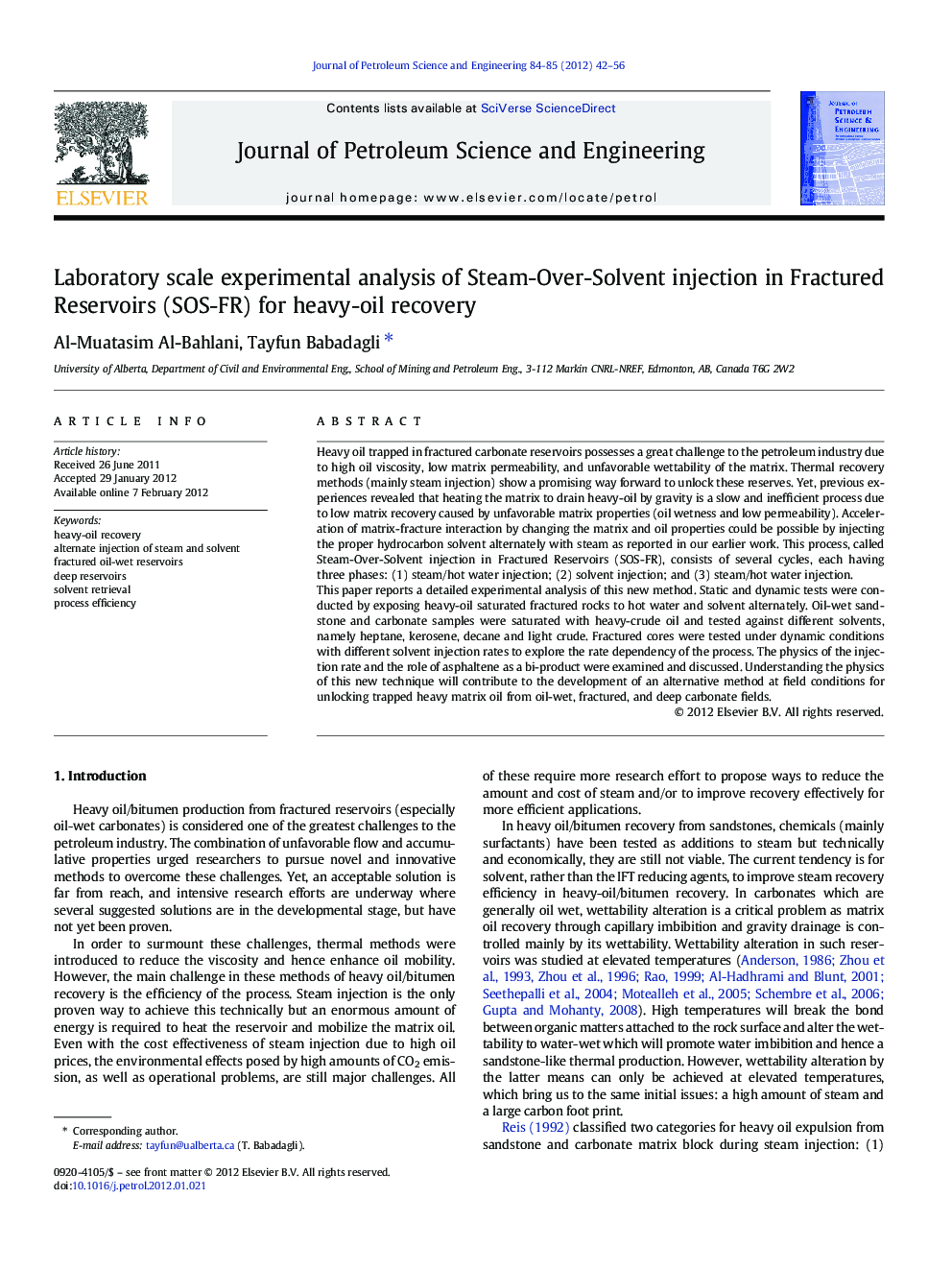| کد مقاله | کد نشریه | سال انتشار | مقاله انگلیسی | نسخه تمام متن |
|---|---|---|---|---|
| 1755556 | 1522849 | 2012 | 15 صفحه PDF | دانلود رایگان |

Heavy oil trapped in fractured carbonate reservoirs possesses a great challenge to the petroleum industry due to high oil viscosity, low matrix permeability, and unfavorable wettability of the matrix. Thermal recovery methods (mainly steam injection) show a promising way forward to unlock these reserves. Yet, previous experiences revealed that heating the matrix to drain heavy-oil by gravity is a slow and inefficient process due to low matrix recovery caused by unfavorable matrix properties (oil wetness and low permeability). Acceleration of matrix-fracture interaction by changing the matrix and oil properties could be possible by injecting the proper hydrocarbon solvent alternately with steam as reported in our earlier work. This process, called Steam-Over-Solvent injection in Fractured Reservoirs (SOS-FR), consists of several cycles, each having three phases: (1) steam/hot water injection; (2) solvent injection; and (3) steam/hot water injection.This paper reports a detailed experimental analysis of this new method. Static and dynamic tests were conducted by exposing heavy-oil saturated fractured rocks to hot water and solvent alternately. Oil-wet sandstone and carbonate samples were saturated with heavy-crude oil and tested against different solvents, namely heptane, kerosene, decane and light crude. Fractured cores were tested under dynamic conditions with different solvent injection rates to explore the rate dependency of the process. The physics of the injection rate and the role of asphaltene as a bi-product were examined and discussed. Understanding the physics of this new technique will contribute to the development of an alternative method at field conditions for unlocking trapped heavy matrix oil from oil-wet, fractured, and deep carbonate fields.
► A new model was proposed for deep, heavy-oil, oil-wet, fractured reservoirs.
► Detailed dynamic and static experimental results and analysis were provided.
► The new technique ensures fast and effective solvent retrieval from matrix.
► Optimal conditions (injection rate) for practical applications were determined.
► Best solvent type was determined with minimal steam temperature.
Journal: Journal of Petroleum Science and Engineering - Volumes 84–85, April 2012, Pages 42–56